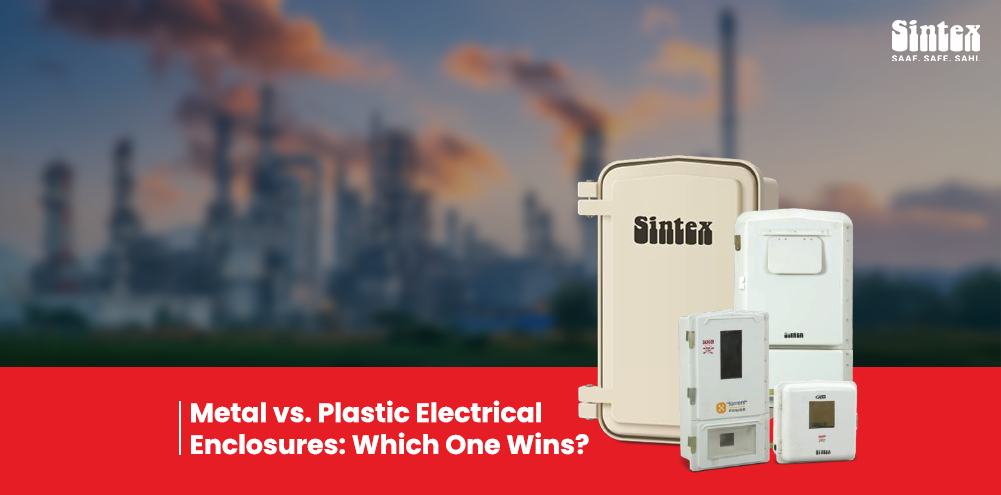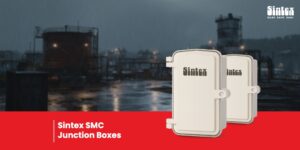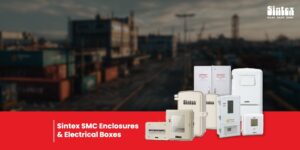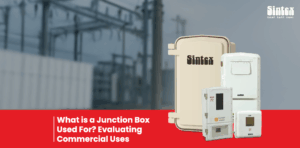Metal vs. Plastic Electrical Enclosures: Which One Wins?
Share

Table of Contents
This blog consists of a complete guide on metal vs. plastic electrical enclosures, making it easier to choose the right one. It explains what enclosures are and compares both options in detail. Metal enclosures are strong and good at handling heat, but are heavy, costly, and can rust. Plastic enclosures, on the other hand, are lightweight, rustproof, weather-resistant, and need less maintenance, making them a smarter choice. The blog also highlights real-world uses, cost factors, and Sintex innovations like SMC meter boxes and FRP gratings.
Electrical safety is about preventing shocks, fires, and equipment damage by using the right systems and enclosures. When the proper enclosure is in place, there’s no room for second-guessing—it becomes the deciding factor in building safe, reliable industrial facilities or apartment complexes. The question that keeps coming back? Metal or plastic. Which of them scores when it comes to safeguarding your electric products?
No matter if you’re an electrician, facility manager, do-it-yourselfer, or project manager, chances are you’re at this juncture. Let’s simplify it for you in the most straightforward, unadorned terms.
The Basics: What Are Electrical Enclosures?
Electrical enclosures contain and shield live electrical parts like junction boxes, electric meter enclosures, and switch gears. They safeguard interior components against dust, moisture, tampering, rusting, etc.
Materials differ, but metal (mild steel or aluminium) and plastic (FRP or SMC) are most typical. Your selection affects everything from safety and sturdiness to affordability and installability.
Metal Enclosures: The Pros and Cons
Pros:
- Strong and impact-resistant
- Commonly used in rugged industrial environments
- Good heat dissipation
Cons:
- Conducts electricity, which may require grounding
- Heavier and harder to install
- Prone to rust and corrosion unless specially coated
- Costlier to maintain and repair
Metal functions, but with complications—particularly in wet or corrosive environments.
Plastic Enclosures: What Makes Them Stand Out?
At Sintex, we specialise in advanced plastic-based solutions like SMC junction boxes, FRP gratings, and SMC meter boxes, and we’ve seen first-hand how they transform projects.
Here’s why:
- Non-conductive: Superb insulation, so no danger of electrical shock
- Lightweight: Simple to ship and install
- Weatherproof and rustproof: Great for outdoor and coastal applications
- Maintenance-free: Saves both time and money
- Shockproof and tamper-resistant: Ideal for public and industrial use
Whether it’s an electrical junction box, LCS, electric meter box, or industrial-grade battery stands, plastic options, especially those made with SMC and FRP, have the upper hand.
Real-World Use Cases: Where Each Shines
| Application | Best Option |
| Wet/Coastal Areas | Plastic (FRP/SMC) |
| Heavy Industrial Machinery | Metal |
| Residential Projects | Plastic |
| Public Utility Poles | Plastic (SMC) |
| Temporary Installations | Plastic |
| High-Vibration Environments | Plastic (No warping) |
Cost and Maintenance Comparison
Let’s not ignore the elephant in the room: cost. While upfront costs of plastic and metal enclosures may be similar, the lifetime cost is where plastic wins. Here’s how:
- No repainting
- No rusting
- No corrosion treatment
- Lower installation costs due to weight
- Minimal cleaning required
For example, our FRP battery stands, FRP ladders, and SMC meter boxes are long-lasting and practically zero-maintenance. Once installed, you can forget about them confidently.
Sintex’s Take: Plastic Power
At Sintex, we’ve designed a range of electric products that meet industry standards while solving real-world pain points. Our:
- SMC junction boxes are fire-retardant, tamper-proof, and pole-mountable
- SMC junction boxes are lightweight and rotproof
- FRP ladders meet OSHA standards while being rustproof and waterproof
- FRP gratings offer slip resistance and are corrosion-free
- Battery stands are acid-resistant, termite-proof, and maintenance-free
- Meter boxes are pilferage-proof, shockproof, and provide wide applications
All this with zero compromise on safety or performance. So, metal or plastic? If you’re setting up a massive industrial plant with extreme conditions, metal may still have a few use cases. But for everything else, especially if you value ease, safety, cost-efficiency, and low maintenance, plastic enclosures win hands down.
Wrapping Up
Choosing the right enclosure isn’t just a checkbox. It defines how safe, durable, and efficient your electric products will be in the long run. At Sintex, we believe in pushing boundaries, whether it’s a weatherproof electric meter box, a smart LCS, or corrosion-free FRP gratings.
And if you’re still on the fence? Try one of our SMC junction boxes or SMC meter boxes and see the difference yourself. Ready to upgrade? We’ve got you covered.
FAQs
Yes. Our electrical junction boxes and SMC junction boxes are 100% weatherproof and built for extreme outdoor conditions.
Absolutely. Our FRP battery stands are acid-resistant and prevent current leakage, offering both strength and safety.
Not at all. FRP ladders are lightweight and built to meet OSHA and ANSI standards, offering excellent durability and safety.


